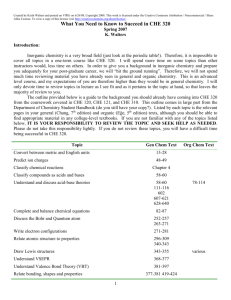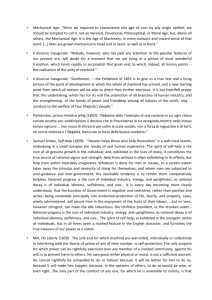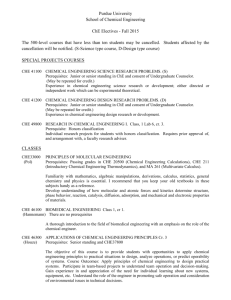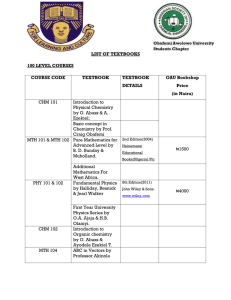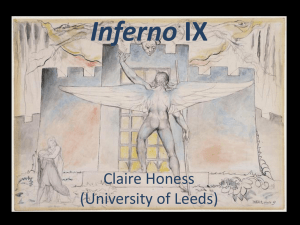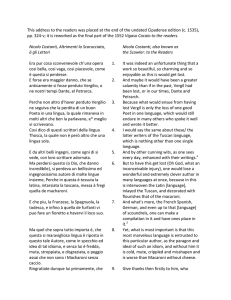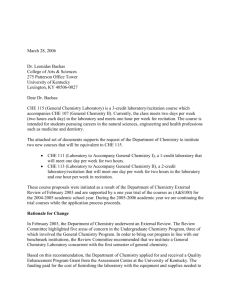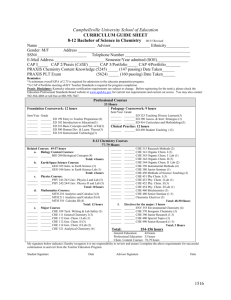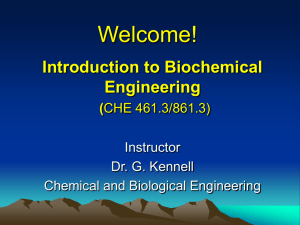Video-Clips For General Chemistry Lab Experiments
advertisement
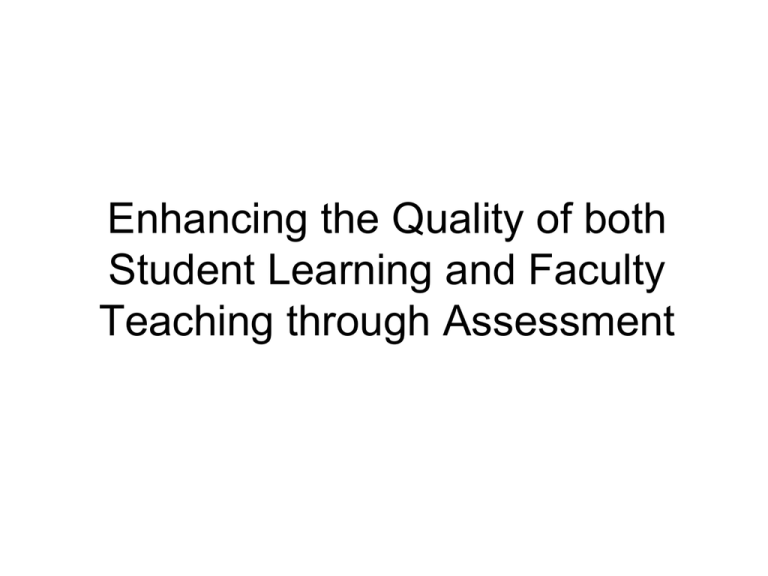
Enhancing the Quality of both Student Learning and Faculty Teaching through Assessment Assessment Assessment: a term applied to a wide range of approaches used to measure educational effectiveness. • Formative Provide faculty with timely information on what, how much, and how well students are learning. “Student Learning” • Summative Provide information summarizing how much has been achieved at a specific point in time relative to some content standards. “Student Achievement” Formative and summative assessments are not mutually exclusive. Teaching: a dynamic act of communication Message Student Faculty Vehicle used for sending message Teaching: a dynamic act of communication • Faculty need to: – identify what they want to communicate (teach) to their students. – make sure students know explicitly what the goals and objectives are for the course in general or for the topic covered in class in particular. – recognize and adapt to the increasing diversity of background variables in the student population. – select appropriate means to convey or deliver the “message”. – determine on a timely manner, the extent to which students are learning and actively participating in the learning experience. Learning: a dynamic act of communication • Students need to: – Cope with course requirements. – Manage time and effort in a cost-effective manner. – Understand the new material in relation to previous knowledge. – Engage actively with the course content. – Develop an independent approach for understanding new ideas. – Move from reproducing knowledge to transforming it and applying it to new situations. – Make use of most if not all the resources available to enhance the learning experience. An Example of Assessment Video-Clips For General Chemistry Lab Experiments Difficulties in Freshman Chemistry Lab experiments • Students are not familiar with common laboratory equipment: – Correct names of glassware and other equipment. – Proper handling of equipment. Difficulties in Freshman Chemistry Lab experiments • Students are not familiar with laboratory techniques and safety precautions: – Correct experimental set ups. – Proper handling of chemicals. – Proper disposal of waste. – Efficiency during the experiment. Difficulties in Freshman Chemistry Lab experiments • Students have difficulties grasping the conceptual component of the experiment: – Purpose of the experiment. – Proper handling of data collected. – Anticipate sources of error. – What to do if a mistake is made during the experiment. Assessment of students’ attitudes towards a novel pre-lab approach in Introductory General Chemistry Laboratory-Fall 2005 • In the fall of 2005, video clips for the lab experiments for general chemistry (CHE 111) were made available for students to view and familiarize themselves with the experiment scheduled for each week. • The clip showed the basic experimental set up and important procedural steps. • The duration for each video clip was about 2-3 minutes. • Students were asked to fill out a survey (anonymous) which was then analyzed using the Lickert scale: 1= strongly agree, 2 = agree, 3 = neutral, 4 = disagree, 5 = strongly disagree Sixty one students participated in the survey and the results are tabulated below: Question # Question #Students who Agreed (1&2) #Students who Disagreed (4&5) #Students who were neutral (3) 1 CHE 111-My anxiety level for doing the lab was reduced after viewing the video clip. 34 18 9 2 CHE 111- I was confident to carry out the experiment after watching the video clip. 31 15 15 3 CHE 111- Answering the Pre-lab Questions related to the video clip helped me be prepared for the lab. 29 20 12 4 CHE 111- Having viewed the experimental set up I did not seek the teaching assistant’s help as much while performing the experiment in lab. CHE 113- It would have been beneficial to have video clips available for the CHE 113 experiments for the winter quarter. 33 13 15 42 9 10 CHE 113- Having been through the experience once, I feel confident to carry out the experiments without the video clips for CHE 113. 19 19 22 5 6 % Students CHE 111 students response to the video-clip survey 80% 70% 60% 50% 40% 30% 20% 10% 0% Agreed Disagreed Neutral Q1 Q2 Q3 Q4 Survey Question Q5 Q6 • Overall, the majority of students have a positive response to the use of video clips as a pedagogical tool for enhancing their laboratory experience in the class. • It would be interesting to create video clips for CHE 113 and CHE 115 experiments and proceed to further assess the goodness of this pedagogical approach. • Link to access the video clips (http://chemistry.che.depaul.edu/rparra/Courses/CHE_111/Fall_05/C HE_111_05.htm) An Example of Classroom Assessment Problem-solving and Self-reflecting in CHE113 (W2009) Problem-solving and Self-reflecting in CHE113 (W2009) • Common issues: – Students tend to work on problems near the exam day. – Students tend to go to office hours also near the exam day. – Students rarely reflect on their ways to solve problems. Problem-solving and Self-reflecting in CHE113 (W2009) • Plan: – Assign a list of problems/exercises from the textbook. Students are required to turn in detailed, explicitly work out solutions of these problems. The homework exercises will contribute 15% to overall grade. However, to earn any points in these assignments students must include a complete a self-assessment report for the assignment. Problem-solving and Self-reflecting in CHE113 (W2009) • Objectives: – Increase the frequency of students going to office hours. During office hours, I can help students enhance their quality of learning in a cost-effective manner. – Help students take better advantage of the review sessions with their course assistant or SI leader. – Help students become self-directed learners by determining what strategies would be more effective for a student’s specific learning styles. Problem-solving and Self-reflecting in CHE113 (W2009) • Results: – A notable increase in the frequency of students asking for clarification on concepts, learning strategies, and so on during office hours, and beyond. – I got timely feedback on what seemed to be a major issue or issues with regard to a particular concept. I then addressed these issues in class ASAP. – I also provided feedback to individual students and to the whole class . Problem-solving and Self-reflecting: Actual Example Exercise # Self-assessment report 8-1 I understand how to do this exercise. I found this to be an easy problem after going over the notes. I found this problem to be very difficult. What made it difficult for me was how to apply the change in volume to the problem. After some help from a friend I understand how to arrive at the answer. However, I need to go over this again to fully understand. I understand 100% how to do this problem. It took me awhile to figure out how to determine which one is the strongest because you have to multiply each constant by –log. I had a lot of difficulty with this problem because you don’t set up the constant the same as we did in chapter 7. I need to go over this one again to better understand it. Average understanding of these problems. I especially need to go over number 9 and 21 and other problems similar to these. 8-9 8-13 8-21 Overall 90% or more understa nding 100% More than 80% but less than 90% Less than 80% 85% 100% 60%
